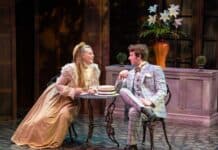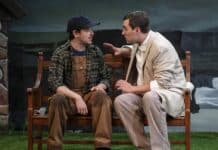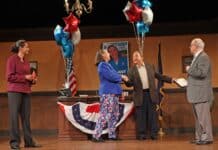The classic novella The Turn of the Screw by Henry James has influenced and informed authors, artists, and actors since its original publication in 1898. Now, this provocative psychological tale has been adapted into a new stage production — a musical written and directed by Matt Conner, with libretto and lyrics by Stephen Gregory Smith and music direction by Paige Rammelkamp. This innovative interpretation is playing now through October 26 at the Creative Cauldron in Falls Church, Virginia.
A famed gothic horror, The Turn of the Screw, tells the tale of the fragile human psyche through a warped weave of twisted threads — a delicate tapestry wherein you pull one thread looking for answers only to find you’ve unraveled a greater mess of fraying questions. The story centers on Bly Manor, a large English estate seated atop a high hill in the remote countryside, where a young governess becomes convinced that malevolent spirits lurk.
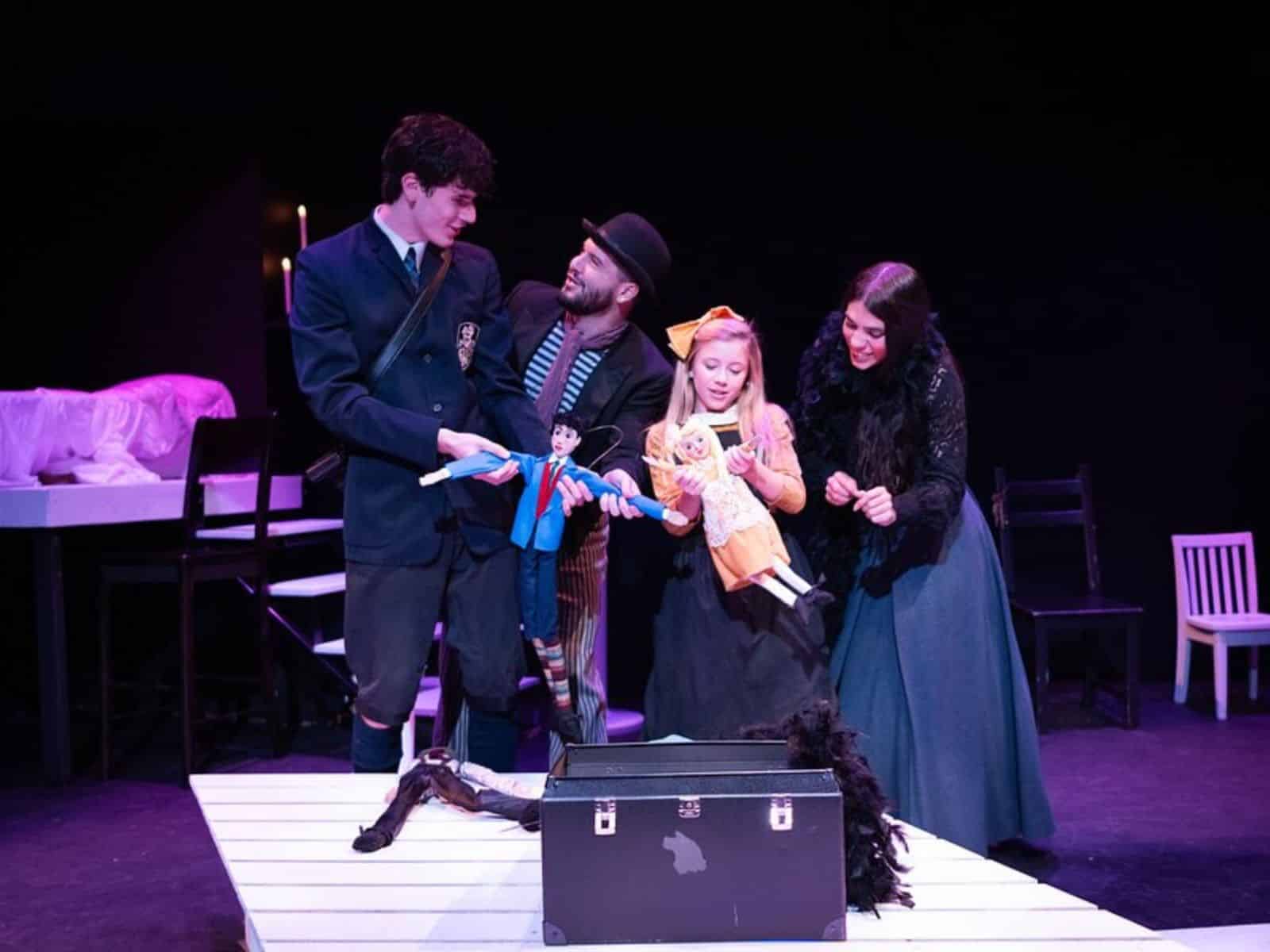
Bly Manor is home to two children, the sweet and innocent Flora (June Tuss) and her older brother Miles (John Poncy). After the death of the children’s parents, they are taken in by their uncle (Bobby Smith), who has a rather hands-off approach to parenting and, instead, prefers to employ a governess to tend to the children.
We join the story when Ms. Giddens (Susan Derry), the new governess, arrives at Bly Manor, unaware of the horrors that await her. Soon after she is employed, she begins seeing the ghosts of the former governess, Ms. Jessel (Marcy Ledvinka), and the former valet, Peter Quint (Christian Montgomery). As the show unfolds, Ms. Giddens grows fearful that the ghosts have an unhealthy, unholy hold on the children, mainly Miles.
Poncy portrays the mysterious role of Miles by embodying the dark charisma and sociopathic tendencies of a deeply disturbed and traumatized teenage boy. This is amplified even further by the specific unsettling tones of his solo songs, namely “Make Believe” and “Puzzle,” two songs rooted in eerie motifs and melodies, reminiscent of creepy carnival-esque imagery.
Ms. Giddens’ paranoid fear grows as she begins worrying that the children, persuaded by the worrisome apparitions, are working together against her. She is slowly compelled to question everything and everyone around her, including herself, and ultimately reexamine her entire reality. Derry depicts this induced state of paranoia perfectly. You can feel her emotional state gradually fall apart at an even and believable pace, which allows the climactic crescendo to pay off satisfyingly and elegantly.
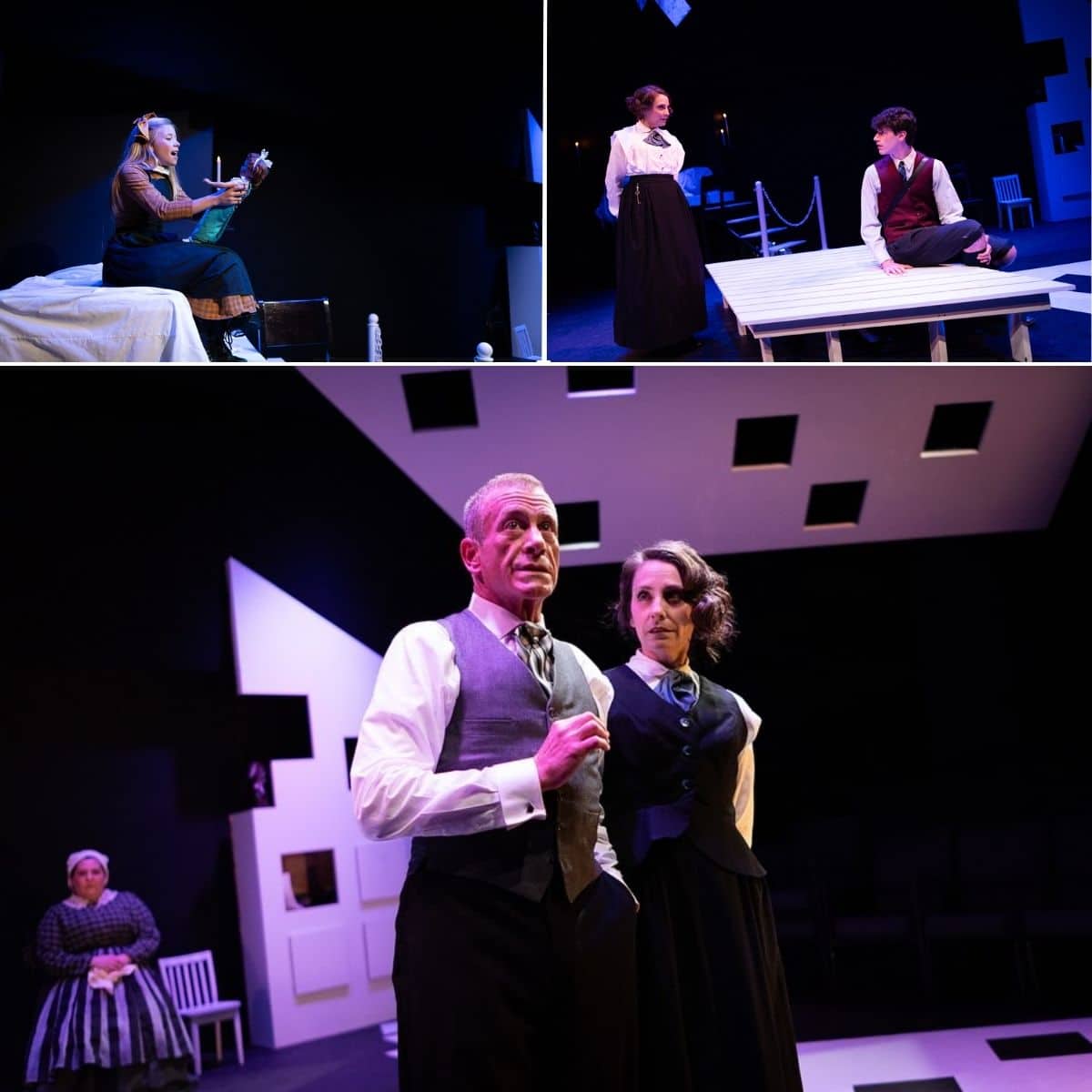
Derry also builds the role through her theatrical, nearly operatic vocal performances. All three female leads (Derry, Ledvinka, and Karen Kelleher, who plays Mrs. Grose, the housekeeper and long-time resident of Bly Manor) give similar vocal performances, singing with controlled vibrato and impressive range.
The emotional highlight of the evening came near the end of the show during “Tiny Little Ship,” “Tiny Little Ship/Moment,” and “Puzzle 2.” Derry’s poignant vocals, paired with the pained expression emanating from her dark eyes, appealed to the audience as though trying to convey Giddens’ precarious truth to each of us individually.
Other excellent vocal standouts of the evening were Ledvink’s and Montgomery’s duets. The casting of our two ghosts was clearly conscious, considering how cleverly they complemented one another. Additionally, Kelleher’s confident and powerful vocals were a definite crowd favorite, as well as Smith’s eloquent and simply enjoyable performance — he may have been the only one to not miss a single note.
The musical numbers are primarily written in minor keys, which work wonders in evoking the dark nature of the era in which the story is set, as well as the haunting themes of the show. Minor keys, however, are generally more challenging to sing with technical perfection, which often results in occasional pitch issues from the performers. Further, despite the somewhat small performance space, most of the performers could have benefited from being mic’ed — if only to better balance against the resonance of the orchestral tones projected overhead.
The other production elements brilliantly heightened the show, however. Mainly the multimedia projections, lighting, and set design. Scene Designer Margie Jervis created an elaborate metaphor through her set design and use of props. At the beginning of the show, we are shown a white, boxy dollhouse with multiple square cut-outs indicating windows on each side. This dollhouse was used to depict the full exterior shots of Bly Manor.
With the assistance of Technical Director/Lead Carpenter Edward Wiant, the walls of that dollhouse are mirrored in the set design. Several large white slabs with white square cutouts hang above the stage at various angles, resembling dismembered walls that depict Ms. Giddens’ splintering psyche. Moreover, the sharp, square pieces cut from each white slab act as the missing puzzle pieces — the pieces Ms. Giddens is attempting to solve throughout the entire show.
The set is also constructed with an entirely black and white design, alluding to the often black-and-white nature of our individual perceptions of reality. Lighting Designer Lynn Joslin highlighted the black and white design by projecting a range of bright colors in varying hues upon the monochrome set from the lights hanging overhead. The carefully crafted choice of color (from red to blue to green to purple) works gradually yet powerfully to amplify the mood of a particular scene.
Projection Designer/Stage Manager Nicholas J. Goodman also increases the overall production value by bringing the story to life through elegant, artful projections against a veiled screen, which splits the stage, allowing the ghosts to linger behind it. Close-up photos of Ms. Jessel (almost in the style of photographer Man Ray’s famous photographs of Lee Miller) were thrown up on the screen at various angles. Additionally, painted across the screen, almost in the style of a beautiful children’s book illustration, were projections of peaceful waves paired with blue lighting and rainstorms paired with red lighting.
This unique interpretation of the classic Henry James novel, The Turn of the Screw, contains not only original music but also a troubling twist ending that turns the screw a little deeper still. Creative Cauldron’s ending works to tie the traumas of our past to the perceptions of our present and, ultimately, the consequences of our future.
Running Time: Approximately 90 minutes, with no intermission.
The Turn of the Screw: The Musical plays through October 26, 2025, presented by Creative Cauldron as part of their Bold New Works for Intimate Stages, and sponsored by Mark Werblood and Serene Feldman Werblood. Creative Cauldron is located within the Broad and Washington Building at 127 E. Broad St., Falls Church, VA 22046. Tickets are available beginning at $40 for adults and $25 for students. Tickets can be purchased online here. More information about the show as well as the cast and crew can be found in the program here.


